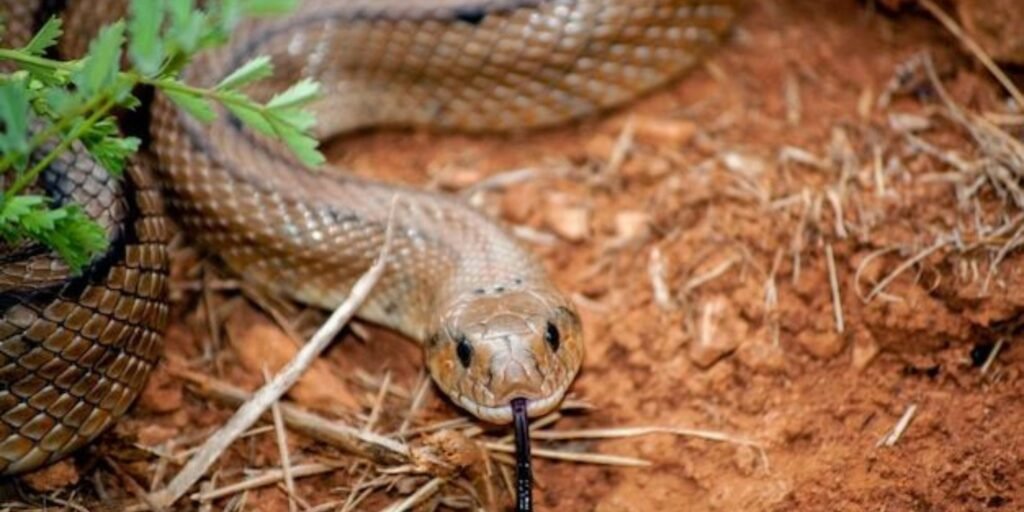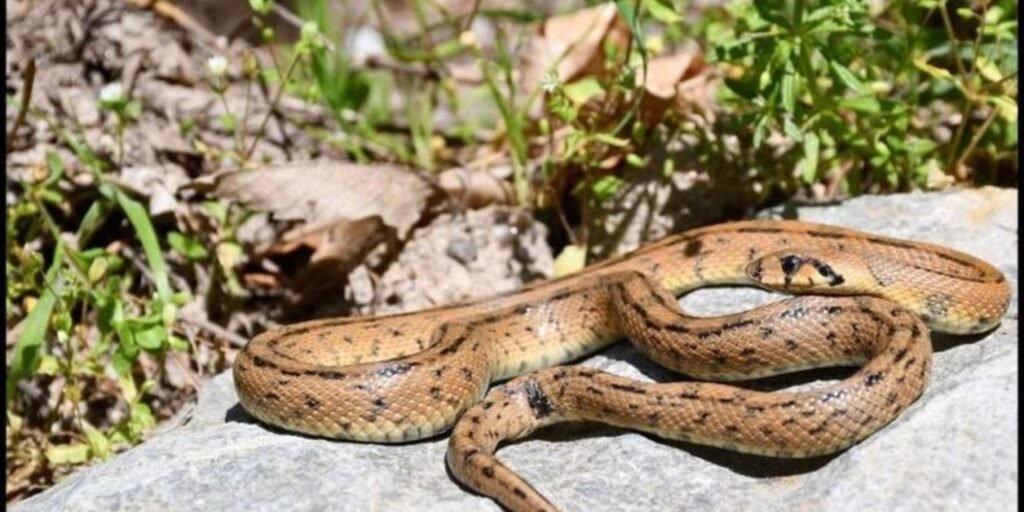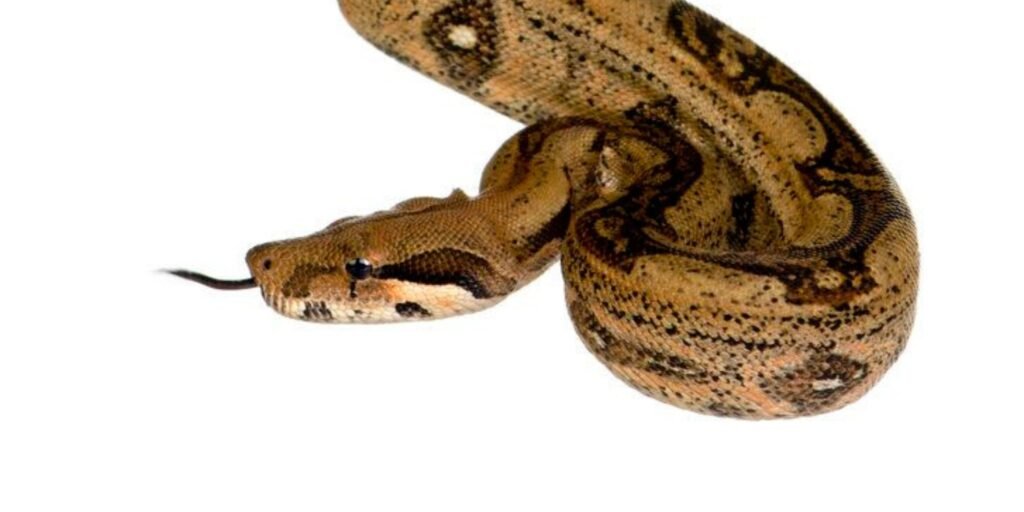Often shrouded in mystery, the ladder snake captivates nature enthusiasts and casual observers alike. This reptile’s unique appearance and intriguing behaviours have sparked curiosity for generations. But what do we really know about the ladder snake? From its striking patterns to its elusive lifestyle, there’s much more than meets the eye.
This comprehensive guide will take you on a journey into the world of the ladder snake. We’ll explore where it lives, what it eats, how it mates, and even delve into its conservation status. Whether you’re a seasoned herpetologist or curious about snakes in your backyard, get ready to unravel this fascinating creature’s mysteries!
Unraveling the Mysteries of the Ladder Snake: A Comprehensive Guide

The ladder snake is known for its distinctive appearance, featuring a series of light and dark bands resembling a ladder’s rungs. This striking pattern not only makes it easily recognizable but also serves as effective camouflage among vegetation. These snakes can vary in colour, from browns to greens, adapting to their environments.
Habitat plays a crucial role in the life of a ladder snake. They thrive in diverse ecosystems such as scrublands, grasslands, and wooded areas across Europe. Their ability to blend into different surroundings helps them avoid predators while hunting.
Ladder snakes are primarily diurnal, meaning they’re most active during the day. Observing their graceful movements can be an enchanting experience, whether they’re basking on sun-warmed rocks or slithering through tall grasses.
Snakes and Ladders
The term “ladder snake” often piques curiosity, blending the worlds of reptiles and childhood games. This intriguing name can lead to misconceptions about its nature. Unlike the playful board game, ladder snakes are real creatures with unique traits.
These fascinating serpents don’t climb ladders but rather navigate their environments with agility. They inhabit various landscapes across Europe and Asia, showcasing adaptability in different habitats.
Understanding the connection between names is essential for fully appreciating these animals. While “ladders” evoke images of playfulness, they remind us that the natural world is filled with wonders waiting to be explored. The ladder snake’s essence lies beyond any game; it reflects an extraordinary life woven into Earth’s rich tapestry.
Appearance
The ladder snake, scientifically known as *Elaphe scalaris*, is easily identifiable by its striking pattern. Its body features dark brown or black bands resembling a ladder’s rungs against a lighter background. This unique colouration serves as excellent camouflage in its natural habitat.
Typically reaching lengths of 1 to 2 meters, these snakes have slender bodies that allow for graceful movement through various terrains. Their scales are smooth and glossy, adding to their aesthetic appeal. The head is slightly wider than the neck, showcasing large eyes that enhance their keen sense of sight.
Ladder snakes exhibit variations in colour depending on their geographical location. Some populations may display more vibrant hues, while others might be duller. This diversity adds an intriguing layer to the overall allure of this fascinating species.
Distribution
The ladder snake, scientifically known as Zamenis scalars, is primarily found in southern Europe. Its range extends through countries like Spain, Portugal, and Italy. This species thrives in various habitats, often favouring dry areas such as grasslands and scrublands.
These snakes are quite adaptable and can also be spotted near agricultural fields and urban edges. They tend to avoid dense forests or overly wet environments. The combination of these habitats provides ample hunting opportunities.
Interestingly, the ladder snake’s distribution does not reflect a uniform pattern across its range. Local populations may vary significantly based on environmental factors and human activity, affecting their chances of survival in certain regions. Understanding where they thrive helps conservation efforts tailor strategies effectively.
Habits and Lifestyle
Ladder snakes are primarily diurnal, meaning they’re most active during the day. They enjoy basking in the sun, which helps regulate their body temperature. This behaviour is crucial for digestion and overall energy levels.
These snakes prefer habitats that offer a mix of open spaces and shelter. You’ll often find them in grasslands, shrublands, or near woodland edges, where they can stealthily move through vegetation while seeking warmth.
Ladder snakes are known for their agility when it comes to movement. They navigate quickly through their environment, using climbing and swimming skills when needed. Their lifestyle revolves around finding suitable places to hide from predators while searching for food throughout the day.
Diet and Nutrition of Ladder snake
The diet of the ladder snake primarily consists of small mammals, birds, and lizards. These snakes display a keen sense of hunting, relying heavily on their excellent vision and heat-sensing capabilities to locate prey. They are opportunistic feeders, adapting their diet based on availability.
Ladder snakes employ constriction techniques to subdue their catch before consumption. This method allows them to tackle larger meals than one might expect from their size. Their feeding habits often vary with the seasons; they may hunt more frequently during warmer months.
Digestion in these reptiles is efficient but can take time after consuming a sizable meal. During this period, ladder snakes remain relatively inactive as they process food within their bodies. This behaviour helps conserve energy while allowing for optimal nutrient absorption.
Mating Habits

Ladder snakes exhibit fascinating mating behaviours that often take place in the spring. During this time, males can be seen engaging in competitive displays to attract females. These displays may include wrestling with other males or showcasing their impressive size and strength.
Once a male successfully courts a female, they engage in courtship rituals that involve intricate movements and body language. The male will often rub against the female, creating an intimate connection before copulation occurs.
After mating, females are responsible for laying eggs. They typically seek out warm, sheltered spots to deposit their clutches. This nurturing behaviour is crucial for ensuring the survival of hatchlings as they emerge into the world ready to fend for themselves.
Population of Ladder snake
Often shrouded in mystery, the ladder snake captivates nature enthusiasts and casual observers alike. This reptile’s unique appearance and intriguing behaviours have sparked curiosity for generations. But what do we really know about the ladder snake? From its striking patterns to its elusive lifestyle, there’s much more than meets the eye.
This comprehensive guide will take you on a journey into the world of the ladder snake. We’ll explore where it lives, what it eats, how it mates, and even delve into its conservation status. Whether you’re a seasoned herpetologist or curious about snakes in your backyard, get ready to unravel this fascinating creature’s mysteries!
Unraveling the Mysteries of the Ladder Snake: A Comprehensive Guide
The ladder snake is known for its distinctive appearance, featuring a series of light and dark bands resembling a ladder’s rungs. This striking pattern not only makes it easily recognizable but also serves as effective camouflage among vegetation. These snakes can vary in colour, from browns to greens, adapting to their environments.
Habitat plays a crucial role in the life of a ladder snake. They thrive in diverse ecosystems such as scrublands, grasslands, and wooded areas across Europe. Their ability to blend into different surroundings helps them avoid predators while hunting.
Ladder snakes are primarily diurnal, meaning they’re most active during the day. Observing their graceful movements can be an enchanting experience, whether they’re basking on sun-warmed rocks or slithering through tall grasses.
Snakes and Ladders
The term “ladder snake” often piques curiosity, blending the worlds of reptiles and childhood games. This intriguing name can lead to misconceptions about its nature. Unlike the playful board game, ladder snakes are real creatures with unique traits.
These fascinating serpents don’t climb ladders but rather navigate their environments with agility. They inhabit various landscapes across Europe and Asia, showcasing adaptability in different habitats.
Understanding the connection between names is essential for fully appreciating these animals. While “ladders” evoke images of playfulness, they remind us that the natural world is filled with wonders waiting to be explored. The ladder snake’s essence lies beyond any game; it reflects an extraordinary life woven into Earth’s rich tapestry.
Appearance of Ladder snake
The ladder snake, scientifically known as *Elaphe scalaris*, is easily identifiable by its striking pattern. Its body features dark brown or black bands resembling a ladder’s rungs against a lighter background. This unique colouration serves as excellent camouflage in its natural habitat.
Typically reaching lengths of 1 to 2 meters, these snakes have slender bodies that allow for graceful movement through various terrains. Their scales are smooth and glossy, adding to their aesthetic appeal. The head is slightly wider than the neck, showcasing large eyes that enhance their keen sense of sight.
Ladder snakes exhibit variations in colour depending on their geographical location. Some populations may display more vibrant hues, while others might be duller. This diversity adds an intriguing layer to the overall allure of this fascinating species.
Distribution
The ladder snake, scientifically known as Zamenis scalars, is primarily found in southern Europe. Its range extends through countries like Spain, Portugal, and Italy. This species thrives in various habitats, often favouring dry areas such as grasslands and scrublands.
These snakes are quite adaptable and can also be spotted near agricultural fields and urban edges. They tend to avoid dense forests or overly wet environments. The combination of these habitats provides ample hunting opportunities.
Interestingly, the ladder snake’s distribution does not reflect a uniform pattern across its range. Local populations may vary significantly based on environmental factors and human activity, affecting their chances of survival in certain regions. Understanding where they thrive helps conservation efforts tailor strategies effectively.
Habits and Lifestyle
Ladder snakes are primarily diurnal, meaning they’re most active during the day. They enjoy basking in the sun, which helps regulate their body temperature. This behaviour is crucial for digestion and overall energy levels.
These snakes prefer habitats that offer a mix of open spaces and shelter. You’ll often find them in grasslands, shrublands, or near woodland edges, where they can stealthily move through vegetation while seeking warmth.
Ladder snakes are known for their agility when it comes to movement. They navigate quickly through their environment, using climbing and swimming skills when needed. Their lifestyle revolves around finding suitable places to hide from predators while searching for food throughout the day.
Diet and Nutrition
The diet of the ladder snake primarily consists of small mammals, birds, and lizards. These snakes display a keen sense of hunting, relying heavily on their excellent vision and heat-sensing capabilities to locate prey. They are opportunistic feeders, adapting their diet based on availability.
Ladder snakes employ constriction techniques to subdue their catch before consumption. This method allows them to tackle larger meals than one might expect from their size. Their feeding habits often vary with the seasons; they may hunt more frequently during warmer months.
Digestion in these reptiles is efficient but can take time after consuming a sizable meal. During this period, ladder snakes remain relatively inactive as they process food within their bodies. This behaviour helps conserve energy while allowing for optimal nutrient absorption.
Mating Habits
Ladder snakes exhibit fascinating mating behaviours that often take place in the spring. During this time, males can be seen engaging in competitive displays to attract females. These displays may include wrestling with other males or showcasing their impressive size and strength.
Once a male successfully courts a female, they engage in courtship rituals that involve intricate movements and body language. The male will often rub against the female, creating an intimate connection before copulation occurs.
After mating, females are responsible for laying eggs. They typically seek out warm, sheltered spots to deposit their clutches. This nurturing behaviour is crucial for ensuring the survival of hatchlings as they emerge into the world ready to fend for themselves.
Population
The population of the Ladder snake, or Elaphe scalaris, can vary significantly across its range. In some areas, these snakes thrive and can be frequently spotted in their natural habitats. However, their numbers may decline in regions where human activity disrupts ecosystems.
Population density is influenced by several factors, including habitat availability and food sources. Urbanization and agricultural expansion often lead to habitat fragmentation, which can isolate populations. This isolation makes it harder for them to breed and maintain genetic diversity.
Conservation efforts are crucial for ensuring the survival of this species. Monitoring population trends helps researchers understand the health of their environments. Active research initiatives aim to gather data on Ladder snake populations to facilitate effective conservation strategies.
Related Animals
The Ladder Snake shares its habitat with several fascinating species. These include the European Rat Snake, known for its striking patterns and adaptability to various environments. The Grass Snake also thrives in similar areas, often found near water sources.
Additionally, the Smooth Snake can be spotted cohabiting within these regions, showcasing a more secretive lifestyle. Related animals, such as the aesculapian snake, highlight the diversity of serpents that coexist alongside the Ladder Snake.
The population of the Ladder snake, or Elaphe scalaris, can vary significantly across its range. In some areas, these snakes thrive and can be frequently spotted in their natural habitats. However, their numbers may decline in regions where human activity disrupts ecosystems.
Population density is influenced by several factors, including habitat availability and food sources. Urbanization and agricultural expansion often lead to habitat fragmentation, which can isolate populations. This isolation makes it harder for them to breed and maintain genetic diversity.
Conservation efforts are crucial for ensuring the survival of this species. Monitoring population trends helps researchers understand the health of their environments. Active research initiatives aim to gather data on Ladder snake populations to facilitate effective conservation strategies.
Conservation Status of Ladder snake
The ladder snake’s conservation status varies across its range. Some areas have stable populations due to suitable habitats and low human interference. However, these snakes face significant threats in regions facing habitat loss and pollution.
Human activities contribute to their decline. Urbanization and agriculture encroach upon their natural environments, fragmenting habitats crucial for survival. Additionally, road fatalities pose another risk as they cross pathways searching for food or mates.
Conservation efforts are essential to protecting this species. Awareness campaigns can educate locals about its ecological importance. Establishing protected areas may also help maintain healthy populations of ladder snakes while promoting biodiversity within the ecosystems where they reside.
Related Animals

The Ladder Snake shares its habitat with several fascinating species. These include the European Rat Snake, known for its striking patterns and adaptability to various environments. The Grass Snake also thrives in similar areas, often found near water sources.
Additionally, the Smooth Snake can be spotted cohabiting within these regions, showcasing a more secretive lifestyle. Related animals, such as the aesculapian snake, highlight the diversity of serpents that coexist alongside the Ladder Snake.

